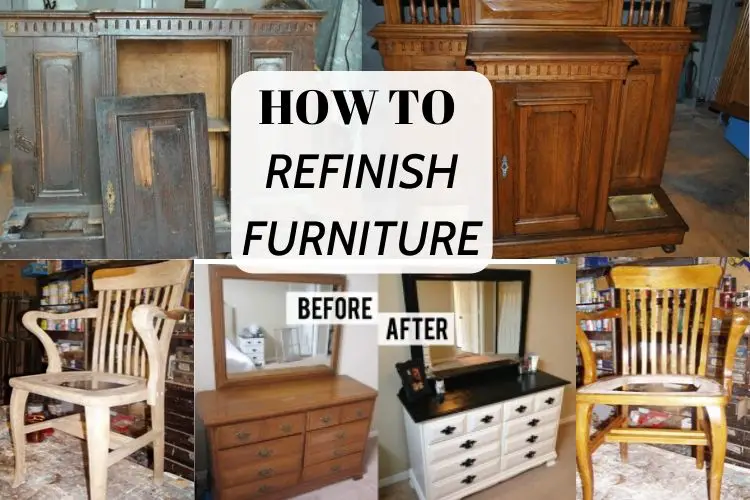How to Refinish Furniture
There are old pieces of wood furniture that you like, which you still want in your home, but time passed and wear have left their mark. With patience and a little time you will learn how to refinish the furniture at will. Refinishing furniture will be easier from here on out!
Refinishing furniture is the process that involves the application of repair and restoration methods in order to restore and bring back besides the repair, also the aesthetic factor (removing stains and scratches, restoring the polish and refreshing the color) of the furniture.
In the first case we intervene to stiffen the structure of the parts, in the second we the color can be changed, a semi-glossy or matte finish can be applied, some components can be modified or new elements can be added.
Polishing is a process that involves the application of repair and restoration methods in an establish order. It does not matter how and with what materials the final result is obtained. The only purpose is to refinish furniture and make the furniture functional again.
There is a lot to know when it comes to taking on a furniture refinishing project and this guide will provide you the best tips on how to remove the finish, use tools, prepare the wood, staining and finishing.
So in the end, you will refinish your furniture in an easy and simple manner!
When It’s Time to Refinish Your Furniture?
As good as the varnish was and no matter how well maintained the furniture is, over time, fine scratches or small defects still appear.
When the scratches are deep, when the varnish becomes discouraged because the water has swept over the surface or when discoloration of the wood or the sticks appears then it is time to refinish the furniture, and the intervention is more difficult and involves more work.
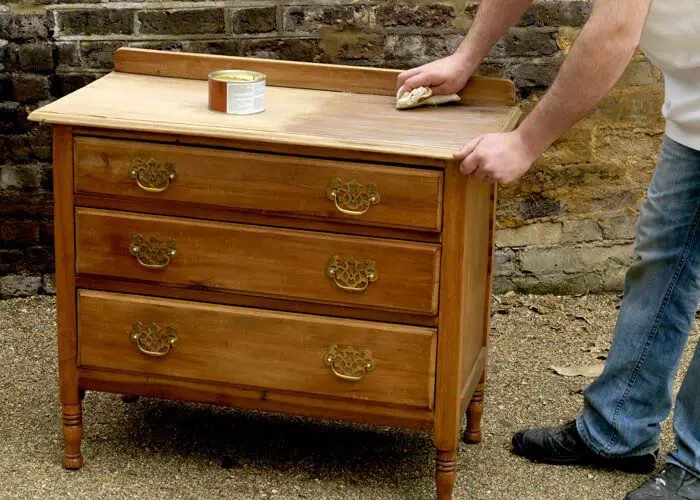
The end result does not depend solely on the quality of the products used. The way each stage is carried out is very important, and the final quality of the work is primarily due to the correctness of the work submitted and not to the fact that you bought a very good varnish.
Because the most common scratches or stains appear on the table tops I will refer to such a refurbishment, but the steps are valid for any kind of furniture or wooden object.
GOOD TO KNOW BEFORE WE START REFINISHING FURNITURE
If we decide to take care of ourselves to refinish the wooden furniture, it is good to document ourselves well before we start the work and arrange an appropriate work space.
We will need a spacious, bright and well ventilated location, which can allow us to open the windows, to get rid of the dust gathered after polishing and also the smell of varnish and paints.
The place must be large enough to allow us to move the furniture from one place to another, so that we can work in comfort and without wasting too much time.
In addition, it is advisable to protect your hands with leather gloves, in order not to risk poisoning from contact with strong solvents. In addition, this way you will minimize the danger of cuts.
It is indicated to protect your eyes and airway from the substances you will be working with and the resulting dust.
We must identify the defects that appear on the wood surface as best as possible and repair all the moving parts of the furniture, with functioning problems, doors and drawers, hinges and locks.
These must be done at the beginning, so that we no longer risk scratching the new layer of lake and can make any other necessary modifications or adaptations after.
TOOLS NEEDED TO DO THE FURNITURE REFINISH PROCEDURE
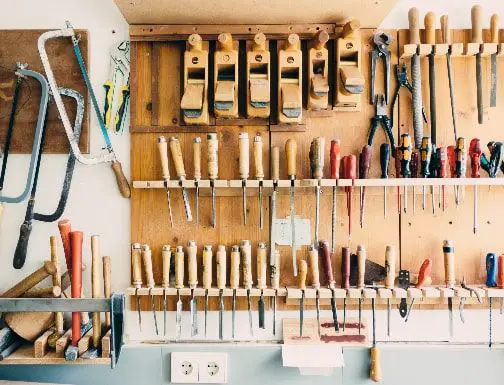
Here’s what tools you need to refinish furniture:
Tools
- Saw
- Hammer drill
- Screw clamps and other devices with which you can apply pressure to the glued wood
- Hammer (metallic and rubber)
- Paint / paint gun;
- Vacuum cleaner
- Grinding knife
- Measuring instruments (ruler, roulette, ball level)
- Pliers and screwdriver for removing nails and screws
- Grinding machine (useful for large surfaces)
- Paint Brushes;
Abrasive tools and materials
- Sandpaper with medium and fine granulation
- Abrasive sponges
- Wire brush
- Steel wool
- Closet with closet
Chemicals and adhesives
- Strippers (to remove the old finish)
- Wooden set (for repairing surface defects)
- Primer (as a base before waxing)
- Varnish (for wood protection)
- Varnish (a colorant that highlights the texture of the wood) or paint
- Wood wax
- Markers for retouching scratches on wooden surfaces
- Adhesive for wood
Other useful materials
- Gloves, face mask and goggles
- Brushes, sponges or rollers
- Vacuum cleaner
- Tape
HOW TO REFINISH FURNITURE
In the following we will describe the how to refinish furniture and stages through which you can render the glow and the initial look of your furniture.
STEP 1: PREPARE THE FURNITURE FOR REFINISH
- Apply a solvent spray
A first step in refinishing furniture is cleaning the furniture and preparing for a new finish. To remove the old finish, use a solvent or stripper spray. It is easy to use and does not leak.
Sprinkle the wood stripper spray evenly over the entire surface you want to clean and allow it to act for 5-10 minutes. You will then see how the old finish begins to rise from the wood.
- Removing the old finish from furniture
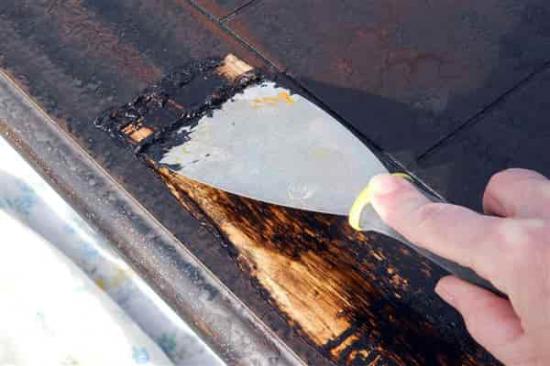
Before proceeding to remove the old finish, the furniture needs to be perfectly clean and therefore it is necessary to apply a solvent spray, leaving it to act for a few minutes.
Later, it will be observed that the initial finishing of the piece of furniture, will begin to detach from the furniture.
With the help of a blade or a scraping object, the layer that has been inflated is eliminated and your furniture will be ready for reconditioning.
Remember that before moving on to grinding, the piece of furniture that has suffered some scratches, it is advisable to wipe it with a paint thinner, leaving it to dry well.
Be careful to pay attention to this process as there must be no trace of debris from the old finish.
- Grinding to remove scratches
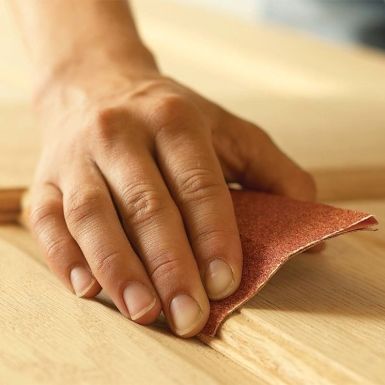
If the piece of furniture is very scratchy and you want to apply a new lacquer layer or paint it, you will need to polish it after cleaning.
For that you will need an sandpaper. A more abrasive sandpaper ensures a deep grinding, a finer one will create a smoother surface.
- Polishing the furniture
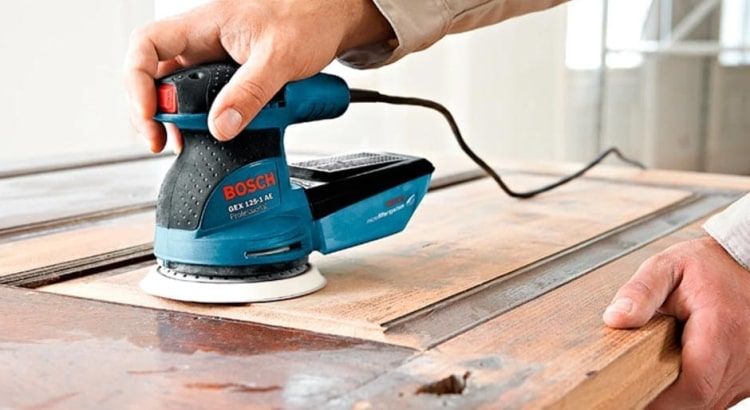
This is an equally important stage for the refinish of old solid wood furniture.
This operation of refinishing the furniture is performed with the help of a grinding machine, being a much more convenient solution than using a grit with a granulation of maximum 150.
After the entire finishing layer is completely cleaned, use a grit with a larger granulation, about 200 or more, to make the furniture very fine.
And this time it is good to clean all the debris and dust on the furniture with the help of a towel.
If the coat of paint or old lacquer gives way to sandpaper, you can use a solvent before proceeding with grinding. You can find it at any home depot stores.
The furniture can have bumps, deep scratches or even visible holes after grinding. To solve these problems, use the primer before applying the new coat of paint.
After grinding, the furniture must be cleaned again.
Before going to paint, make sure you have polished all the elements of the furniture.
Even if you do not completely recondition it, you must prepare each wood surface by grinding with fine-grained grit and then remove the dust.
STEP 2: REPAIR THE FURNITURE IF NECESSARY
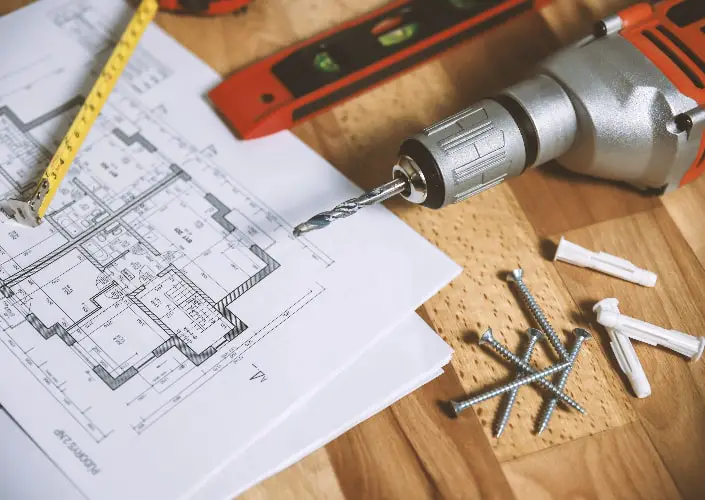
If the furniture is veneered and the veneer has slipped or broken stick it with contact adhesive so you don’t have to get it in the press.
Immediately wipe off the surplus and sand the area. If stains remain glued, they will be very visible when applying the stain.
If the wood has cracks or small holes that you want to repair, use wood. Apply a slightly larger amount because the drying volume decreases with drying. After drying, grind to level.
After you removed the paint, you probably noticed some flaws that until now were impossible to see.
The cracks that appear in the wood must be blocked to ensure the integrity of the furniture object.
You can use epoxy paste or other similar materials for this operation.
This type of paste is soft at the time of application, but it strengthens over time.
If larger pieces of wood are missing near the surface, you can replace the wood with paste, then draw lines with the blade to mimic the wood structure.
After applying the new paint or varnish, no difference will be observed.
If it is impossible to refinish the furniture, it is recommended to replace the respective piece with a wood of the same essence.
Glue the joints
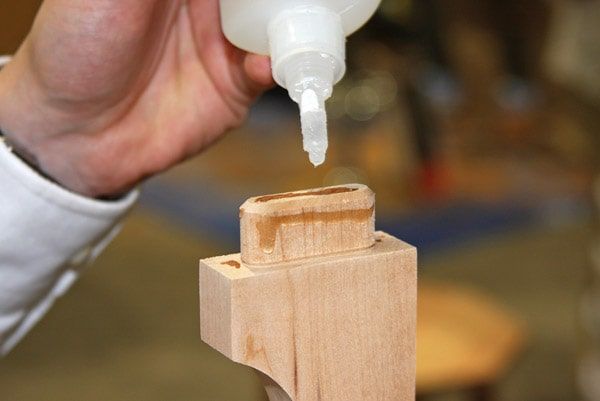
In the case of very old furniture, it is possible that the joints between the different pieces of wood may have weakened over time. In this situation, they must be glued again, otherwise the furniture item may collapse.
To do this, each element must be removed individually and glued again. This is a complex process that requires a lot of time and specialized tools.
Also, the pieces should be carefully removed, as old wood can become fragile. If there is no space and tools, the recommendation is to seek the help of a professional.
At the end, wipe the whole body of the wood with a cloth, to prepare it for the next step.
STEP 3: APPLICATION OF PRIMER
- Application of the stain or mordant
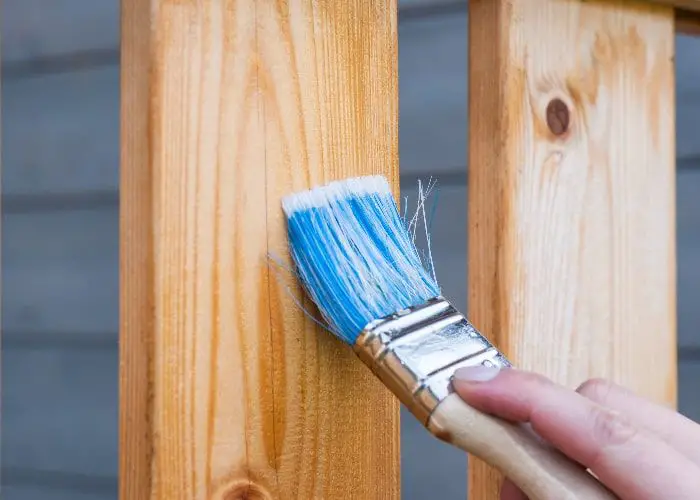
If you want the furniture to be colorful, but the wood fiber is visible, use the finish with a wood stain and varnish. If you use a water-based wood fiber bath, it will rise slightly and the surface will become rougher.
Don’t be scared. You will solve the problem by the first coat or the first coat of varnish. Apply the mordant with a cloth or roller because you can better control the quantity and reduce the risk of stains.
In the brush, the amount applied may be higher at first. If the bath is solvent-based, use a solvent-resistant sponge roller. To avoid getting too dark, use a lighter than desired color and apply 2 coats. This is how you can solve the problems of uniformity.
Here is a step by step guide how to stain wood like a professional!
- Application of primer
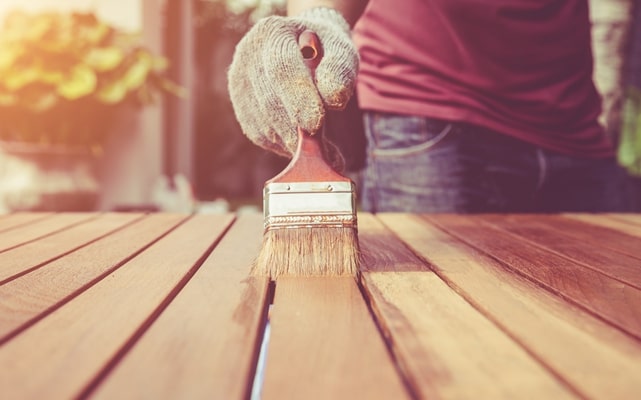
Normally, after drying the bath, a coat of primer is applied.
It ensures better adhesion to the wood and loads better (has more resin and better coating).
However, there are also lakes that can be used as a primer. In general, they are DIY products, made especially for easy application. If you find it too thick dilute it with water, if it is hydro dilutable or solvent.
For water-based ones, do not exceed 5% because it will raise a lot of wood fiber. Apply with brush or roller. Do not dilute too much because there is a risk of leaks that are difficult to remove after drying.
After applying the first layer, allow it to dry and sand it gently with the fine abrasive paper. This will remove the high fiber and any imperfections from applying the primer. After sanding, dust with cotton cloth.
STEP 4: WOOD PAINTING
- Application of the Varnish.
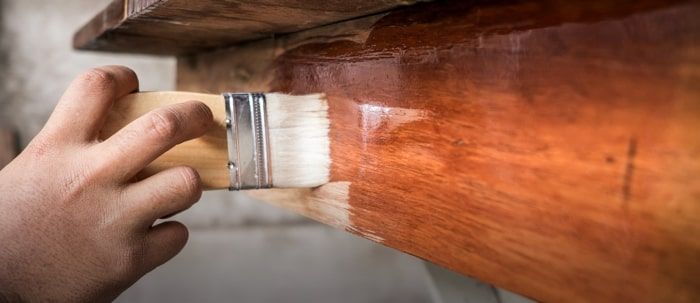
The varnish is applied in the same way as the primer layer. If you use the varnish as a primer, apply another coat in the same conditions as the first time.
Let it dry and see if it is enough. If you want a fuller film you can apply another layer without grinding, after the first layer has been coated (1-2 hours).
If you leave until the next day it is good to sand it beforehand to have a better grip. If the lake is shiny, allow the object to dry in a space free of dust. Dust is the enemy of the shiny lake. It gets stuck in the film and the gloss accentuates the defect.
Choose a quality varnish that will last well over time. The completely dry varnish is wiped with lemon oil. This process will enhance its luster.
For the varnish to reach the entire work surface, in a uniform layer, you can use a special gun for the lacquer.
Precautionary measures for painting furniture
Painting furniture is an easy activity you can do in your spare time. However, it is important to take some protective measures:
- Ventilate the room where you paint, open the windows, doors and do not let anyone stay overnight in that room, with less people, children, pets.
- Use a fan if the room cannot be properly ventilated naturally.
- In the grinding stage, wear a dust mask, safety glasses, also wear working gloves from textile material.
- When painting, use rubber gloves and a mask to protect your lungs.
- Clean and cover the floor of the room where you paint the piece of furniture with a cloth, not plastic, because you can slip.
- Do not paint or store the paint near any heat source and do not smoke during the paint application process.
- You will be surprised to see at the end how well the furniture looks that in the first phase you thought you would not keep.
Reconditioning the old pieces of furniture with the help of paint is a simple process, with a guaranteed effect regarding the arrangement of the space.
Design specialists today adopt very much the combination of old and new, between classic and modern, plus an office, a wardrobe, a chair painted in the right color, will give you the chromatic balance you need.
Painting the Refinish Furniture
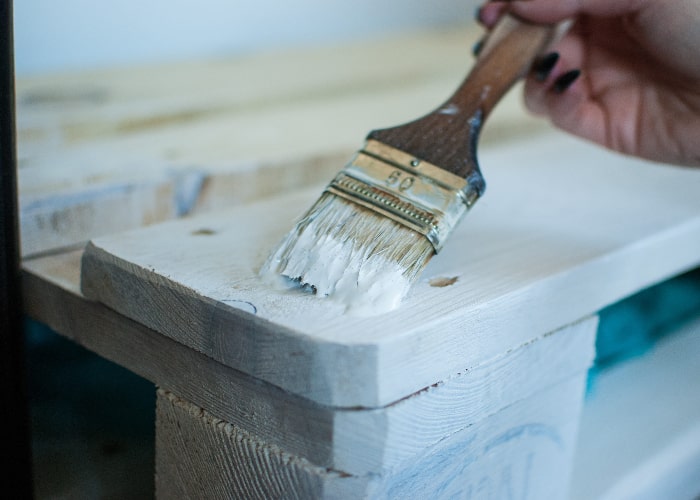
Now it is a pleasure to apply paint on the surface of furniture. Choosing the paint is important to achieve the desired result.
You will use a paint specially designed for wooden surfaces and apply it in two or three layers, if it was a furniture stored under unfavorable conditions.
You can use a paint based on water (it dries easily) or oil based, the latter will generate a glossy film, in addition it has moisture resistance.
Thus, if the pieces of furniture you refinish will be placed in the yard, so in the outside environment, it is mandatory to use oil-based paint, because after the rain the color will remain present.
Opt for a natural hair brush if you use oil based paint, it will not leak on her hair, the application will be done so quickly and you will get a very good finish.
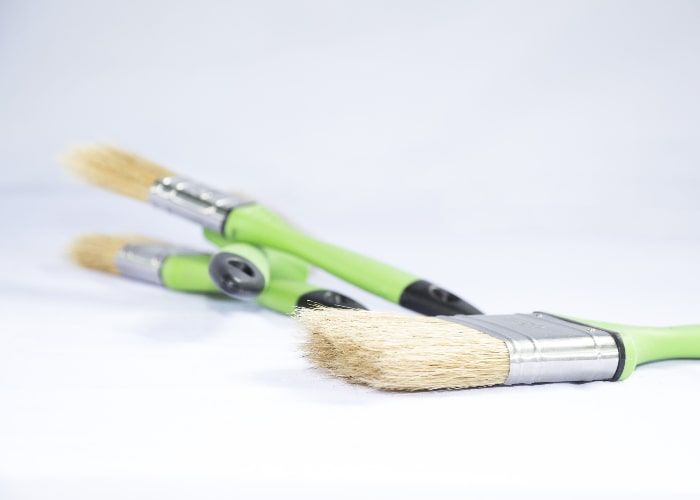
There is also the option of not wanting to cover the furniture pieces with a color, in which case you will choose a varnish for wood. With this you restore the natural color of the furniture. It is easy to apply and dries quickly.
If you do not like to paint with a brush, you can opt for the spray method. Use a spray and apply it to the furniture in multiple layers and thin.
There are some tricks which help to paint the furniture exactly as you want.
Applying the paint is easier if you use a wool pad.
It softens the pad in paint and uses equal movements in the sense of wood fiber.
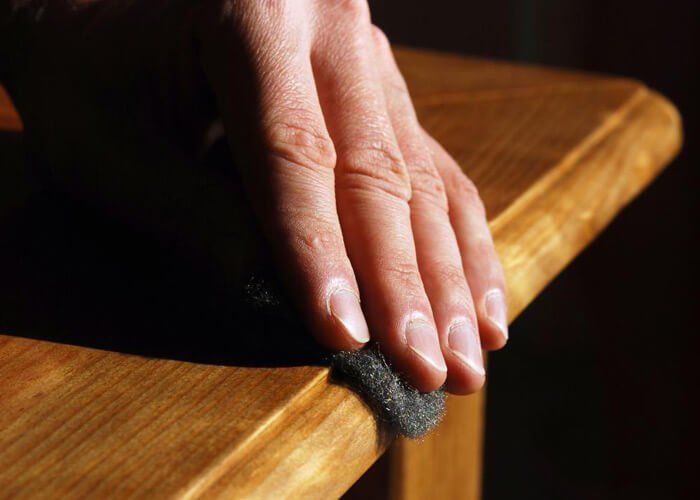
Repeat the process, but make sure that the paint dries completely between the layers, so you can figure out the look before deciding if you want to add a new layer.
Coloring options are unlimited. Regardless of the color you choose, you will give a new life to an old piece of furniture.
Opting for a paint that is resistant to cleaning and dirt, but which also protects the wood. The classic, oil-based, or latex-based ones last very well. If needed, you can give more layers of paint.
Pay attention to dust, insects, dust or leaves that can be deposited on a freshly painted or varnished surface.
Techniques for cleaning metal furniture and repainting
To refinish the metal furniture you need a space, a wire brush and a hair brush, anti-rust treatment, emerald and anti-rust paint.
The furniture is cleaned of rust with a space brush, then with a metal brush. In the end it grinds with the sandpaper, until the surface remains smooth. Clean the surface with hair brush and apply anti-rust treatment with a toothbrush. The painting follows, necessarily in two layers.
Replacement of accessories
We include in this category the springs, handles or handles of furniture. These can be purchased from DIY stores. For a unique, vintage design, you can buy them from antique shops or fairs.
PROTECTING THE NEWLY REFINISH FURNITURE
In order not to get too often in the situation of reconditioning, the furniture must be properly maintained to allow us to use it for a long time.
Old furniture makes certain demands that we must take into account if we want a tasteful interior design. Whether it has been refurbished or still retains its luxurious appearance, wooden furniture is subject to degradation over time.
The good part is that this degradation can be delayed and the wooden structures can be maintained with a few handy solutions:
- The melamine furniture will be periodically wiped with a solution of hot water and detergent, and the polishing will be done with a soft cloth that does not scratch the wood.
- A solution of vinegar water may also be used, but the pungent odor will persist for several hours.
- Old furniture in plywood will be wiped with a solution equally composed of rubbing alcohol and boiled oil.
- Linseed oil is also good at blurring fine scratches – they rub vigorously in the sense of wood fiber with a cork plug soaked in this type of oil.
- The upholstery will in turn be cleaned with the vacuum cleaner and then a special solution that you will dissolve in water.
- The sponge will be squeezed very well so as not to wet the fabric, and in the end it will be wiped again with plain water.
Conclusion on How To Refinish Furniture
Refinishing old furniture is by no means a play, but it can turn into a pleasant activity if you intend to do so.
Time, creativity and patience when you refinish furniture it will of course bring you results as well, and old furniture will enjoy a new home life, giving the rooms an elegant, classic, or otherwise retro, vintage look.
Our advice is that before you start “refinish” the furniture, thoroughly document what you can do with a little imagination and also set a budget for the materials you are willing to buy.
At the same time, do not try to do the impossible or start disassembling the furniture if you do not have enough knowledge in the field. Focus on the changes you can easily make.
If you have a valuable furniture piece, do not start repairing the small defects because its value will decrease. An old piece of furniture with a small scratch is more valuable than the same left-handed repaired piece with a shiny lacquer coat or other inappropriate intervention.

